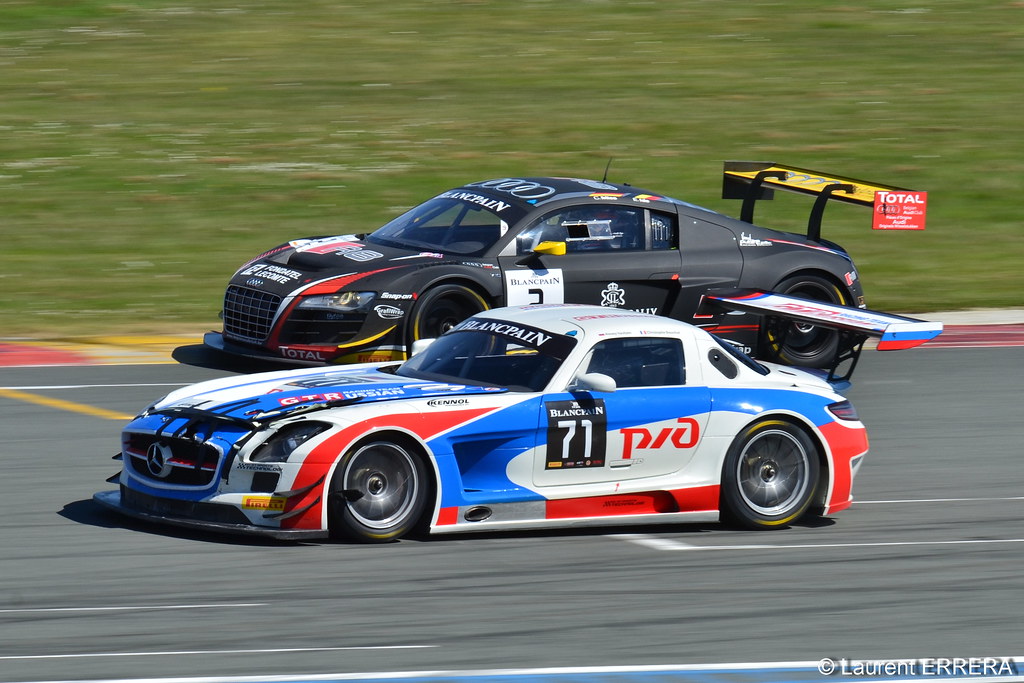#Stéphane Ortelli
Text



Mark Webber & Stéphane Ortelli in a Porsche 911 Dakar vs a cake (part two)
43 notes
·
View notes
Photo

Laurent Aïello, Allan McNish & Stéphane Ortelli - Porsche 911 GT1 '98 - vainqueurs des 24 Heures du Mans 1998. - source Porsche Museum.
71 notes
·
View notes
Text

#F.A.T. Ice Race Aspen#Porsche 911 GT1#Stéphane Ortelli#Le Mans#Colorado#USA#Laurent Aïello#Allan McNish#Museo Porsche#Zuffenhausen#GP Ice Race#Ferdinand Porsche#Ferry Porsche#Zell#Austria#Zell Am See#Tree Farm#Carbondale#Hotel Jerome
1 note
·
View note
Text

El Porsche 911 GT1 es un automóvil de carreras diseñado por el fabricante alemán Porsche para competir en la clase GT1 de deportivos, que también requería una versión de calle para fines de homologación. La versión de calle, producida en edición limitada, se llamó 911 GT1 Straßenversion (versión de calle). Aquí tienes toda la información existente sobre el Porsche 911 GT1:
- El 911 GT1 se presentó en 1996, como respuesta al McLaren F1 y al Ferrari F40, que dominaban la categoría GT1. Sin embargo, el 911 GT1 tenía muy poco en común con el 911 de la época, solo compartiendo los faros delanteros y traseros con el deportivo de producción. Su chasis frontal se basaba en el 911 (993), mientras que su subchasis trasero se derivaba del 962C, al igual que su motor bóxer de 6 cilindros biturbo de 3.2 litros, refrigerado por agua, que generaba unos 600 CV de potencia. El motor se montaba en posición central-trasera longitudinal, en lugar de la posición trasera habitual de los 911. El 911 GT1 debutó en las BPR Global GT Series (el predecesor del campeonato FIA) en las 4 horas de Brands Hatch, donde Hans-Joachim Stuck y Thierry Boutsen ganaron cómodamente. También ganaron en Spa y Ralf Kelleners y Emmanuel Collard triunfaron para el equipo oficial en Zhuhai. El 911 GT1 alcanzó una velocidad máxima de exactamente 330 km/h en la recta de Mulsanne durante los entrenamientos de las 24 Horas de Le Mans de 1996¹².
- En 1997, Porsche presentó una versión evolucionada del 911 GT1, llamada Evo, que tenía un aspecto más aerodinámico y una carrocería más ligera. El motor también se mejoró ligeramente, alcanzando unos 630 CV. El Evo dominó el campeonato FIA GT, ganando seis de las once carreras y logrando el título de constructores y pilotos con Stuck y Boutsen. Sin embargo, en las 24 Horas de Le Mans, el Evo sufrió varios problemas mecánicos y accidentes, y solo uno de los tres coches inscritos logró terminar la carrera, en el segundo puesto detrás del McLaren F1 GTR²³.
- En 1998, Porsche desarrolló una nueva versión del 911 GT1, llamada simplemente '98, que tenía un diseño completamente nuevo y más parecido al 911 (996) que se lanzaría ese mismo año. El motor se modificó para cumplir con las nuevas normas de la FIA, que limitaban la cilindrada a 3 litros y la potencia a unos 550 CV. El '98 también tenía un sistema antibloqueo de frenos (ABS) y un control de tracción (TC). El '98 se enfrentó a una dura competencia por parte del Mercedes-Benz CLK GTR y el Toyota GT-One, pero logró ganar las 24 Horas de Le Mans con Laurent Aïello, Allan McNish y Stéphane Ortelli al volante. Fue la última victoria de Porsche en Le Mans hasta el año 2015²⁴.
- Para poder homologar el 911 GT1 como un GT1, Porsche tuvo que producir un mínimo de 25 unidades para uso en carretera. Estas unidades se denominaron 911 GT1 Straßenversion y se vendieron a un precio de unos 900.000 dólares cada una. El Straßenversion tenía un aspecto similar al Evo de 1997, pero con algunos cambios para adaptarse a las normas legales, como faros elevados, parachoques más grandes, retrovisores exteriores más grandes, intermitentes naranjas y un alerón trasero fijo. El motor se redujo a unos 537 CV para mejorar la fiabilidad y el consumo. El Straßenversion podía acelerar de 0 a 100 km/h en unos 3.7 segundos y alcanzar una velocidad máxima de unos 310 km/h² .
2 notes
·
View notes
Photo

Audi Celebrates 20th Anniversary of First Le Mans Win
Twenty years ago, Audi’s R8 race cars crossed the finish line of the Le Mans 24 Hours race in 1-2-3 formation. The Vorsprung durch Technik brand’s sports car racing program ran for 18 years, during which time Audi won the epic endurance race 13 times – a 72 per cent success rate. We hear from Denmark’s Tom Kristensen, who won for Audi in 2000, 2001, 2002, 2004, 2005, 2008 and 2013, and celebrate the cars that beat the opposition, and the clock.
Tom Kristensen won Le Mans nine times. Here, he recalls Audi’s first victory in the famous 24-hour race in 2000.
‘I was invited by Doctor Wolfgang Ullrich, then Audi Head of Motorsport, to a meeting at Ingolstadt in autumn 1999. He introduced me to some of the Audi Sport engineers and mechanics, and showed me a drawing of the R8 race car. On the spot, I said I would like to be part of the team. We shook hands, and that was the best decision I ever made in racing.’
Victory first time out
‘I tested the car before the 12 Hours of Sebring in the US in March 2000. It was an interim car between the older R8R that Audi had raced in 1999 and the new R8. The front end was still the old car, while the rear was from the R8, but Frank Biela, Emanuele Pirro and I won Sebring in it, which was very important.’
A strong team and a level playing field
‘At Le Mans 2000 I drove with Biela and Pirro again, and we had two sister cars – one crewed by Laurent Aïello, Allan McNish and Stéphane Ortelli, the other by Christian Abt, Michele Alboreto and Rinaldo Capello. Dr Ullrich showed great commitment and passion, and he made sure that we all worked well together and shared all the feedback. He ensured we all had an equal chance and that there was never any additional support for one crew over another. Dr Ullrich always did his utmost to create a level playing field, and that was very motivating, not only for the drivers but also the mechanics and the engineers.’
Reliability was the number-one priority – and it paid off
‘Some people would say Audi took a conservative approach with the R8, certainly compared with some of the more state-of-the-art and – shall we say – ‘bananas’ race cars that followed. The philosophy was, “If there is any problem, we need to be able to fix it,” and that came all the way from board level down. The number-one priority was reliability. Without reliability, you cannot have 100 per cent trust in your equipment, and you cannot perform. It was the perfect approach for Le Mans.’
Finding one set-up to please three different drivers
‘The R8 was the first LMP1 Le Mans prototype I drove with power steering. I was used to heavy steering that took a real effort to turn into corners, which gave me a lot of confidence. It took me some time to get used to the lightness of the R8’s steering, whereas Frank Biela was very happy with it. He used to say, “It gives you quick hands, and you can control it faster.” But it took a long time to get the set-up right for everyone because the input from the drivers was different. Eventually, it became smoother and more progressive, and in the end we were all happy with it.’
A wild ride at Le Mans
‘We had a bit of an issue with the brakes – we had to change discs and pads. The car was very fast, but in that first year the twin-turbocharged V8 engine had a lot of turbo lag, followed by a very aggressive response. It was like a delayed time bomb – nothing, nothing, and then BOOM! That improved a lot the following year when Audi introduced the FSI system, which injected petrol directly into the combustion chambers. That was very helpful for the drivability of the engine, and it was also a lot more efficient and an excellent development for road cars. The first R8 had a lot of understeer, too. So, you had a car with a wild engine response that was set up to feel settled and more consistent as the tires wore, but as a result felt quite nervous and twitchy on fresh tires.’
Drop your guard for a split second and you're off
‘In an LMP1 car you are going at the speed of a small aircraft, and you are just trying to keep it nailed to the ground. You always have to be alert. The cars are very aggressive at the limit. If you are alone on the track, it’s fine, you can be calm. But in traffic, or in close fights with your rivals, you always have to look out for aerodynamic upset caused by the slipstream of other cars, which can buffet and bounce your car around. These things aren’t visible, but they can be pretty dramatic, and if you don't expect them, you can be sure you will go off when they arrive.’
It’s not over till the final minute
‘We were holding the lead towards the end of the 2000 race. Frank Biela was cool as ever – as long as you gave him time to have his cigarette. He was fit, he was strong, he was calm. Emanuele was always Italian – always emotional, you know? Ready to celebrate the victory before the end, which was something I hated. Maybe you would say my approach was pessimistic, but I didn’t want anything – no handshakes – before the checkered flag.’
Crossing the line 1-2-3
‘About 30 minutes before the end, Dr Ullrich froze the race order, and we were able to cross the line 1-2-3. And the colors of the cars were red, yellow and black, as in the colours of the German flag.’
The R8 went on to become the most successful LMP1 car ever
‘The Audi R8 won four more Le Mans, and I was part of the winning driving team each time. You could win in that car at Mont-Tremblant in Canada, at Mid-Ohio, at Sebring and Laguna Seca in the US, at Donington in the UK, at Jarama in Spain and at Le Mans in France. You could win in the R8 at so many different tracks all over the world.’
Photo L to R: Audi Head of Motorsport Dr. Wolfgang Ullrich, Emanuele Pirro, Tom Kristensen and Frank Biela on the podium.
3 notes
·
View notes
Photo

🚦Toyota SUPRA GT4 🚦 Voici une nouvelle venue en GT 4, il s’agit de la Toyota GR Supra, qui sera disponible en premier lieu dans le continent européen avant les USA et l’ Asie. Arrivée au mois de mars, développée avec la collaboration du pilote Monégasque Stéphane Ortelli, elle sera proposée en avant première dans les pays européens puisqu’il s’agit du plus gros marché du GT 4 avec toute une kyrielle de série : GT4 European Series, GT FFSA, 24 Heures Series, VLN, toutes agrées par SRO Motorsports Ses principales caractéristiques sont les suivantes, un moteur six cylindres en ligne 3 litres d’une puissance de 430 CV, avec une commande de boîte automatique à 7 rapports, pour un poids de 1350 kg. (à Circuit Automobile EIA) https://www.instagram.com/p/CBlQVPfivzG/?igshid=7uv2v7pyhvqy
0 notes
Video
3 - Audi R8LMS Ultra - Belgian Audi Club Team WRT - Stéphane Ortelli/Martin Ragginger by Laurent ERRERA
Via Flickr:
Blancpain Sprint Series Coupes de Pâques 2015, Nogaro, France
0 notes
Text
New Post has been published on AutóAddikt
New Post has been published on https://www.autoaddikt.hu/2018-ban-is-palyan-a-lexus-rc-f-gt3/
2018-ban is pályán a Lexus RC F GT3

Az Emil Frey Lexus Racing tapasztalt pilótákból összeállított, ütőképes csapata idén két Lexus RC F GT3 versenygéppel áll rajthoz a Blancpain GT sorozatban.
Az újonnan alapított Emil Frey Lexus Team remekül zárta bemutatkozó tavalyi szezonját, és a svájci magáncsapat most teljes gőzzel készül a 2018-as évadra. Lorenz Frey csapatfőnök számos vendég és újságíró jelenlétében nyitotta meg az új versenyműhelyt a vállalat safenwili központjában, s az ünnepség alkalmából exkluzív információkat osztott meg az összegyűltekkel a csapat előtt álló idei kihívásokról. A Nemzetközi GT Open Bajnokságon aratott tavalyi győzelmek után az egyetlen, Lexus által támogatott csapat most feljebb lép a Blancpain GT versenysorozatba, ahol mind a gyorsasági, mind pedig hosszútávú futamokon két Lexus RC F GT3 géppel vesz majd részt. Az Emil Frey Lexus Racing több jól ismert pilótát is a soraiban tudhat. Közülük az egyik legtapasztaltabb versenyző a Le-Mans győztes Stéphane Ortelli (Monaco) és a korábbi Formula 1-es pilóta, Christian Klien (Ausztria), és a csapat színeiben versenyez majd a német Marco Seefried, az osztrák Norbert Siedler, a finn Markus Paltalla és a Lexus egyik tavalyi sztárpilótája, a spanyol Albert Costa Balboa is.
“Különleges nap ez a mai, hiszen nemcsak új műhelyünket nyitjuk meg, hanem az idei versenyprogramunkat is most jelentjük be nyilvánosan” – fogalmaz Lorenz Frey, az Emil Frey Lexus Racing csapatfőnöke. “Mindig jó érzés ismerős arcokat látni a szezonnyitón. Bár a Blancpain GT sorozat nem ismeretlen számunkra, mégis izgalmas kihívásnak számít, hiszen két viszonylag új versenyautóval neveztünk be. A csapat nagyon lelkes, remek pilótáink vannak, és tavaly rengeteg értékes tapasztalattal gazdagodtunk, így izgatottan várjuk az első futamot. Büszkék vagyunk arra, hogy együttműködhetünk a Lexussal, és képviselhetjük a márkát” – teszi hozzá Lorenz. “A Lexus öt alappillérének egyike a lenyűgöző teljesítmény, és ennek bemutatására nincs is jobb mód, mint az autóversenyzés. Komoly motivációt és önbizalmat ad nekünk, amikor izgatottnak és kíváncsinak látjuk a Lexus márkakereskedésekben dolgozó munkatársainkat – és persze a vevőket, akik betérnek európai autószalonjainkba, vagy éppen a versenypályák lelátóin szurkolnak.”
Az Emil Frey Lexus Racing új szezonja 2018. április 6-án kezdődik, amikor a belgiumi Zolderben rajthoz áll a Blancpain GT Sorozat Gyorsasági Kupa mezőnye, és a versenygépek közt két Lexus RC F GT3 is ott lesz.
0 notes
Photo

Avis à tous ceux qui seront jeudi après-midi au @MondialAuto: séance de dédicaces de mon livre sur le @PaulRicardTrack sur le stand #Cingomma (superbes ceintures italiennes en pneu de vélo recyclé) avec mon cousin Stéphane Ortelli (Hall 3, couloir menant au Hall 2.2). A demain ? (à Mondial De L'auto Paris) https://www.instagram.com/p/BowYEUZBn_-/?utm_source=ig_tumblr_share&igshid=lpbp3f9ck9ns
0 notes
Link
Among the thousand drivers from more than 30 nationalities who will be behind the wheel during the ninth staging of Le Mans Classic on 6-7-8 July on the big Le Mans circuit are ten former winners of the Le Mans 24 Hours. The majority of these drivers will take part in a public conference on Friday at 14:00 in the village.
Ten former winners of the Le Mans 24 Hours: Jürgen Barth (D), Romain Dumas (F), Loïc Duval (F), Jan Lammers (NL), Gérard Larrousse (F), Klaus Ludwig (D), Jochen Mass (D), Stéphane Ortelli (F), Henri Pescarolo (F) and Marko Werner (D). In all they have racked up a total of 18 victories and 132 participations in the greatest endurance race in the world between 1972 and 2018. The outstanding figure among them is Henri Pescarolo who holds the record for the most starts with 33 crowned by four victories.
Four former F1 drivers including one world champion and two grand prix winners will take part in the event: Jenson Button (1988 Jaguar XJR-9 in Group C Racing), René Arnoux (1965 Shelby Cobra 289 in Grid 4 and 1979 BMW M1 Procar in Grid 6), Jacques Laffite (1966 Lola T70 Mk III in Grid 5), and Paul Belmondo (1981 Porsche 935 in Grid 6). Several great names in motor sport will also compete: Jean Ragnotti, Emmanuel Collard (1999 Toyota GT-One in Global Endurance Legends), Alain Serpaggi (1978 Alpine A443 in Grid 6), Guy Fréquelin (1964 René Bonnet Djet in Grid 4) and Willi Kauhsen (Porsche 917 in Grid 5).
The majority of these drivers will take part in a public conference on Friday at 14:00 in the village. It will also be attended by Pierre Fillon (President of the Automobile Club de l’Ouest) and Patrick Peter (founder of Peter Auto). This will give fans the opportunity to put their questions to the drivers via Facebook/LeMansClassic. The host of this conference broadcast live on the same page will ask the drivers the questions chosen. When it’s over an autograph session with the drivers present will be held in front of the E-Bay boutique.
0 notes
Text
The Last Time a Road Car Won Le Mans
The Last Time a Road Car Won Le Mans
Yesterday’s announcement that production-based hypercars could race at Le Mans in 2020 has us thinking about the last time a road car won the famous 24-hour race. It was 20 years ago, and the car was a Porsche 911 GT1 driven by Allan McNish (in his first of three Le Mans wins), Laurent Aïello, and Stéphane Ortelli. This, the 66th running of the 24 Hours of Le Mans, was the last year of GT1, a…
View On WordPress
#1998 le mans 24 hours#24 hours of le mans#911 gt1#car#gt1#Le#le mans#lmp1#Mans#porsche#porsche 911 gt1#Road#time#Won
0 notes
Text


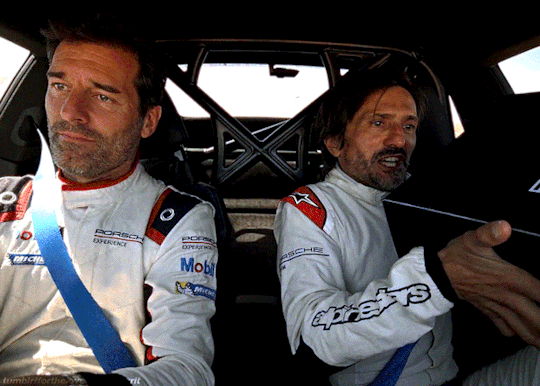
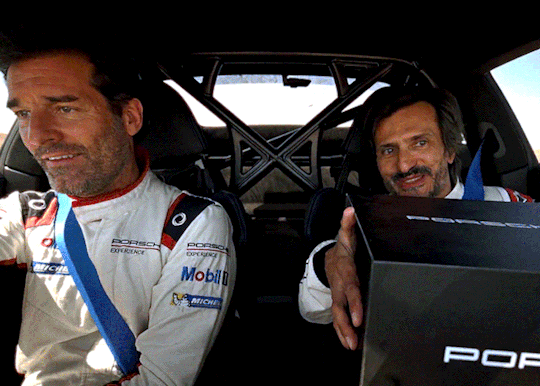
Mark Webber & Stéphane Ortelli in a Porsche 911 Dakar vs a cake (part one)
#why why why make all the vid the same colour huh porsche#this was a pain to make and they still dont look cohesive#but anywayssss#AHHHHHHHHHHHHHHHHHHHHHHHHHHHHHHH#thank you porsche#thank you thank you thank you#this is what he was doing instead of building beehives with seb#mark webber#stéphane ortelli#.mw gifs#sewellove gifs#.2023#.mw porsche#.hands!
52 notes
·
View notes
Text

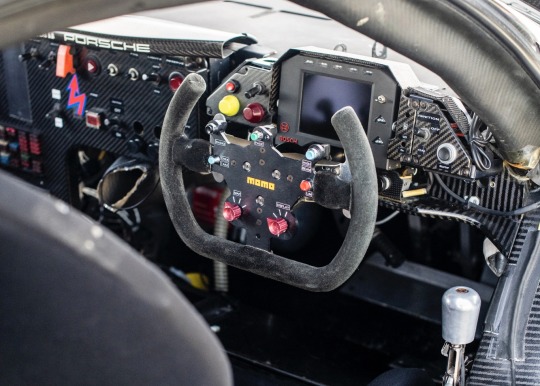



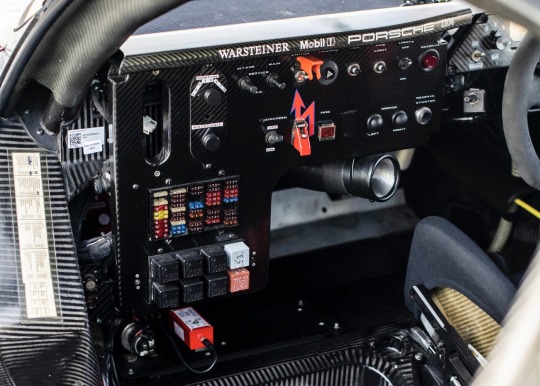
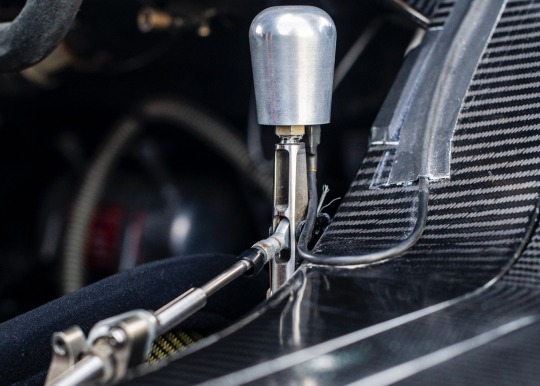


Cockpit de la Porsche 911 GT1 '98 de Laurent Aïello, Allan McNish et Stéphane Ortelli les vainqueurs des 24 heures du Mans 1998. Remi Dargegen. - source Porsche Museum.
38 notes
·
View notes
Text
GRAND Turismo racing takes on a new form in a few days when the Electric GT Championship gets going at the Circuit Paul Ricard in France.
The event, on November 25, will be the first of the world’s first 100 per cent zero-emission GT series, which will presumably feature mainly Teslas.
French racing legend and Formula 1 Grand Prix winner Jean-Pierre Jabouille, Le Mans winner Stéphane Ortelli and EGT Drivers’ Club member Olivier Lombard took a race-prepared Tesla Model S around the 3km circuit last week when the EGT people announced its headquarters would be built at the Circuit Pau-Arnos – with the new building the principal hub for test and development programs.
The region is set to become an incubator for technology and clean energy.
As part of the launch of Electric GT, celebrated artist Johannes Stoetter was commissioned to create a “racing’s past meets racing’s future” work on the historic Spanish Terramar circuit which opened in 1923.
Stoetter, who claims Italian nationality despite his Dutch name, created a realistic 3D image on the concrete surface of a Tesla GT racer alongside a 1934 Bugatti Type 59 – with a bit of help from Swedish artist Vilja Vitkute.
But while the Electric GT category is big news, the Terramar circuit itself is much more intriguing.
Few people had ever heard of it, because unfortunately the Autódromo de Sitges-Terramar was not on the racing calendar for long.
It was a huge project, the brainchild of local Sitges auto identity Frick Armangue, who aimed to turn the quiet seaside town about 30km from Barcelona, into an international motorsport mecca.
It took about a year, 4 million pesetas and 3.5 million kilograms of concrete to transform a rocky outcrop into a 2km circuit with daunting 60-degree banked turns.
It was a magnificent venue, one of the few banked circuits in the world.
Brooklands was first, in 1907, the came Monza in 1922 and Terramar was ready just a year later.
A fourth oval banked track, the Autodrome de Linas-Montlhéry, just outside Paris, followed 12 months later.
Terramar, actually more of a jelly-bean shape than an oval, opened on October 28, 1923, with a 200-lap Spanish Grand Prix for cars of up to 2.0 litres.
Only seven of the 11 entrants arrived on the start line, among them prominent Brit racer Count Louis Zborowski, who was one of the world’s wealthiest young men, with his American Miller.
The event drew a big crowd and at the end of the 200 lapper, only five cars were still running, the winner being French driver Albert Divo, one of the top racers of the 1920s, at the wheel of a Sunbeam.
His average speed was an astonishing 155.89km/h. Zborowski was second, 56 seconds behind, with Alfonso Carreras a further 20 seconds astern in an Elizalde.
It was a great race and the track’s future looked good, although it tested every driver’s mettle and was sometimes referred to as ‘Terrordrome’.
There were no escape roads and the inside of the steeply banked curves were solid rock outcrops while anyone who overshot the outside would find themselves in space, way above tree level.
But it all came to a very abrupt end.
Senor Armangue and his committee were unable to pay the army of workers who built the great track.
The enraged workers then seized all the gate money, leaving the organisers in the embarrassing position of being unable to pay the winning drivers.
The world of motorsport instantly blacklisted Terramar, although the Catalan Motorsport Association tried to keep the place alive.
There were some motorcycle races in the early 1930s, but they didn’t make enough to keep it going, and the circuit was abandoned.
The lap record stood at 45.8 seconds, clocked by Count Zborowski in the Miller, and it stood for 89 years!
Of course, that was largely because there were no other big races held, but it illustrates the great pace of the early 1920s.
The record now stands at 42.6 sec – set by Carlos Sainz in an Audi R8 LMS in a Red Bull promotion.
That’s 3.2 seconds quicker, but in a 5.2-litre V10 with 450kW, all-wheel drive and 7-speed sequential shift.
The Miller had an 88kW 2.0-litre motor, driving the back wheels through a three-speed manual – and on the skinny tyres of the era.
Terramar is still there to this day, and in surprisingly good condition, thanks to quality construction and Catalonia’s temperate climate.
Car companies and clubs occasionally have functions there and the owners have a chicken farm and some sheep in the centre portion.
There’s also talk of them trying to develop it into a resort.
But what could have been the pride of Spain is now known – by those aware of its existence – as the ‘ghost’ track or ‘the world’s loneliest track.’
An odd spot to promote the Electric GT Championship, but who knows, the spirit of Terramar might yet return.
Carlos Sainz on the Terramar track in 2012.
Autòdrom de Terramar, Sant Pere de Ribes, Sitges. Imatge d’una cursa del 1924. 90 anys després de la construcció del circuit, els propietaris han endegat un projecte per fer-hi un complex hoteler i lúdic, 21/11/2013.
Ghost track returns to haunt ‘Tesla’ series GRAND Turismo racing takes on a new form in a few days when the Electric GT Championship gets going at the Circuit Paul Ricard in France.
0 notes
Text
Lucas di Grassi und Marcel Fässler komplettieren Podium in Hockenheim
Spende aller Teilnehmer für Therapieangebote in Kinder- und Jugendmedizin
Passioniertes Finalwochenende mit 16 Rennlegenden
#gallery-0-5 { margin: auto; } #gallery-0-5 .gallery-item { float: left; margin-top: 10px; text-align: center; width: 33%; } #gallery-0-5 img { border: 2px solid #cfcfcf; } #gallery-0-5 .gallery-caption { margin-left: 0; } /* see gallery_shortcode() in wp-includes/media.php */
Audi TT cup#9 Stéphane Ortelli
Audi TT cup#8 Jean-Marc Gounon
Audi TT cup#31 Marco Werner
Audi TT cup#25 Lucas di Grassi
Audi TT cup#7 Marcel Fässler
Audi TT cup#5 Rahel Frey
Audi TT cup#14 Tom Kristensen
Audi TT cup#44 Hans-Joachim Stuck
Audi TT cup#55 Dindo Capello
Audi TT cup#44 Hans-Joachim Stuck
Audi TT cup#44 Hans-Joachim Stuck
Audi TT cup#17 Frank Stippler
Audi TT cup#31 Marco Werner
Audi TT cup#14 Tom Kristensen
Audi TT cup#9 Stéphane Ortelli
Audi TT cup#43 Lucas Luhr
Philip Ellis, Gosia Rdest, Josh Caygill, Milan Dontje, Drew Ridge, Keagan Masters, Yannik Brandt, Mike Beckhusen, Kevin Arnold, Simon Wirth, Tommaso Mosca, Fabian Vettel, Fabienne Wohlwend, Mikel Azcona, Vivien Keszthelyi
Audi TT cup Race of Legends
Audi TT cup Race of Legends
Audi TT cup #7 Marcel Fässler
Audi TT cup #55 Dindo Capello
Audi TT cup #25 Lucas di Grassi
Audi TT cup #43 Lucas Luhr
Audi TT cup #25 Lucas di Grassi
Audi TT cup #17 Frank Stippler
Ein Sieger und viele Gewinner: Im einzigartigen Audi TT cup Race of Legends gab es in Hockenheim keinen einzigen Verlierer. Zum Ende des Markenpokals nach drei Jahren Laufzeit hat Audi viele seiner großen Rennsport-Legenden zum einem Gastrennen eingeladen. Für einen guten Zweck kamen dabei 25.000 Euro Spendensumme zusammen.
Alle hatten ihren Spaß: Tausende Fans ließen sich beim Finale in Hockenheim von ihren Idolen Autogramme geben, die 16 Rennfahrerinnen und Rennfahrer traten in einer nie gekannten Formation auf identischen Rennwagen an, und am Ende profitierte die Stiftung „Große Hilfen für kleine Helden“ von den guten Taten. Sie finanziert inzwischen 19 Projekte und Therapieangebote an der Heilbronner SLK-Klinik für Kinder- und Jugendmedizin. Christian Abt, Filipe Albuquerque, Frank Biela, Dindo Capello, Rahel Frey, Marcel Fässler, Jean-Marc Gounon, Lucas di Grassi, Vanina Ickx, Tom Kristensen, Lucas Luhr, Stéphane Ortelli, Emanuele Pirro, Frank Stippler, Hans-Joachim Stuck und Marco Werner war es ein Vergnügen, in den Audi-TT-cup-Rennwagen gegeneinander anzutreten und persönlich zur Spendensumme beizutragen. Audi Sport customer racing ergänzte mit einem eigenen Beitrag die eingeworbenen Spenden auf die Endsumme von 25.000 Euro.
In der Vorbereitung auf Qualifying und Rennen erhielten die 16 Legenden Unterstützung von den regulären Teilnehmern aus dem Audi Sport TT Cup, den tags zuvor Philip Ellis für sich entschieden hatte. Jeweils ein Junior begleitete eine Legende und gab praktische Tipps im Umgang mit dem 340 PS starken Rennwagen. Im Qualifying hatten sich die beiden Deutschen Frank Stippler und Frank Biela in Startreihe eins die besten Ausgangspositionen verschafft. Stippler setzte sich schon nach dem Start ab, während Filipe Albuquerque, Tom Kristensen und Frank Biela direkt dahinter durch einen Unfall in der ersten Kurve ausfielen. Lucas di Grassi, in der Startaufstellung Zehnter, kämpfte sich in einem spektakulären Rennen als bester Verfolger nach vorn. Bis zur letzten Runde wahrte der aktuelle Formel-E-Champion seine Siegchancen, setzte sich sogar kurz neben Stippler, musste sich am Ende aber um 0,8 Sekunden geschlagen geben. Marcel Fässler, der sich rundenlang mit dem Brasilianer duelliert hatte, komplettierte das Podium als Dritter. Als schnellste Frau im Feld fuhr Vanina Ickx von Startplatz 16 auf den siebten Platz vor und überholte dabei auch den früheren DTM-Champion Hans-Joachim Stuck.
„Das war ein würdiger Abschluss unseres Markenpokals“, sagte Chris Reinke, Leiter Audi Sport customer racing. „An einem Traumwochenende für Audi in der DTM und im Audi Sport TT Cup haben wir zum Abschied unseres Markenpokals ein Ausrufezeichen gesetzt und das Race of Legends mit einem guten Zweck kombiniert. Ein herzliches Dankeschön an unsere vielen Fans und die Legenden für die mitreißende Atmosphäre an diesem Wochenende.“
Quelle: Audi Motorsport
Helfen Sie bitte mit, dass es Hit-TV.eu auch morgen noch gibt. Mit 12 € pro Jahr (1 € pro Monat) sichern Sie die Existenz von unabhängigem Journalismus. (weitere Infos unterm Menüpunkt Spenden) Spenden bitte per Paypal: [email protected] oder per Bank an: Hit-TV.eu IBAN: DE36 8707 0024 0047 7901 00 BIC: DEUTDEDBCHE (Deutsche Bank) Buchungstext “Spende”
Frank Stippler gewinnt Audi TT cup Race of Legends Lucas di Grassi und Marcel Fässler komplettieren Podium in Hockenheim Spende aller Teilnehmer für Therapieangebote in Kinder- und Jugendmedizin…
0 notes
Video
71 - Mercedes SLS AMG GT3 - GT Russian Team - Alexei Karachev/Bernd Schneider -- 3 - Audi R8LMS Ultra - Belgian Audi Club Team WRT - Stéphane Ortelli/Martin Ragginger by Laurent ERRERA
Via Flickr:
Blancpain Sprint Series Coupes de Pâques 2015, Nogaro, France
0 notes

